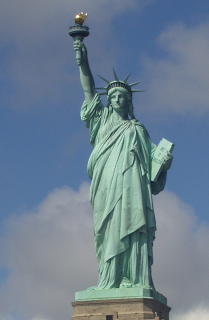This heritage program will culminate in 2015, with the celebration of the 450th anniversary of the founding of Saint Augustine. The US government has also established a federal commission to commemorate the foundation of Saint Augustine, the oldest city in USA.
With our free audioguide you can discover the heart of Florida, Saint Augustine with the Castillo de San Marcos, Nombre de Dios Mission anf Fort Matanzas
But, Who discovered Florida?
Juan Ponce de León
His full name was Juan Ponce de León y Figueroa, this Spaniard born in the lands of Castile in 1460. The two main events that he left to the History have been the conquest of Puerto Rico and the discovery of Florida.
He was of noble descent, being page of King Ferdinand the Catholic. It is known that he fought in the conquest of the kingdom of Granada, the last remaining Muslim realm on the Iberian Peninsula. It is thought
 | |
| Juan Ponce de León |
The plan of the Spanish Crown was clear: to discover new lands and then proceed to its colonization.
There only wasn’t an economic motivation or of power but there was a work of evangelization to those natives they found. The Catholic faith mixed with politics and occupied a very important place in the lives of people.
Ponce collaborated in the conquest of the Spanish, now called Santo Domingo and he was commissioned to conquer the nearby island of San Juan Bautista or Borinquen, now Puerto Rico, in 1508.
Two years later he came to be appointed governor of Puerto Rico and he founded numerous cities.
Later he discovered an area north that was called La Florida, as it was discovered on Easter Sunday called Pascua Florida in Spain, Florida is with flowers. It is for always fall in the early spring.
The Fountain of Youth was a legend according to tradition Ponce anxiously looked for it, but not true. The problem is that this idea is extremely romantic and is now very difficult to forget it and its association with this conqueror.
In 1513 Ponce de León equipped three ships, he defraying all expenses. They start a journey of discovery and conquest. It is known that on March 27th he sighted an island, but he could not find how to land. On April 2nd he arrived at the east coast of the newfound land somewhere on the northeast coast of the current State of Florida. On April 8 he claimed all this land for Spain Crown, calling the Florida land.
Then he sailed south along the east coast, he go upriver that he found, he skirted the current Florida Keys in the west along the coast to Cape Romano. Return to Havana, then he back again and stopping at the Biscayne Bay, before returning to Puerto Rico.
He did not know this was a part of mainland Florida but he thought it was another of the Caribbean islands.
San Agustín
 |
| Castillo de San Marcos |
Although Ponce de León discovered Florida but he couldn’t conquer it and he has many problems in start a settlement there.
In the 16th century 3 colonial powers disputed the territory of Florida: Spain, France and England.
In 1564, French settlers built a fort at the mouth of The San Juan River. This angered the Spanish crown, and a mission led by Pedro Menéndez de Avilés was sent to Florida to resolve the issue.
The Spanish Victory was crushing and it led to foundation of the town of San Agustín.
The Spanish mission sighted land on August 28, 1565. As this was the feast day of Augustine of Hippo, the territory was named San Agustín.
It is said that the Spanish Captain ordered the killing of all the French settlers, furthermore they were Huguenot, French Protestant. They asked for mercy but he refused and the place where they died is called Matanzas. It said that Avilés ordered that engraving on their tombs read that they will were killed: not for being French but heretics.
It is true that there are but a few historic buildings still standing but even today we can visit some of the sites of the old city of St. Augustine, San Agustín.
Do you enjoy this article? Discover in AudioViator.com this audioguide and more.

